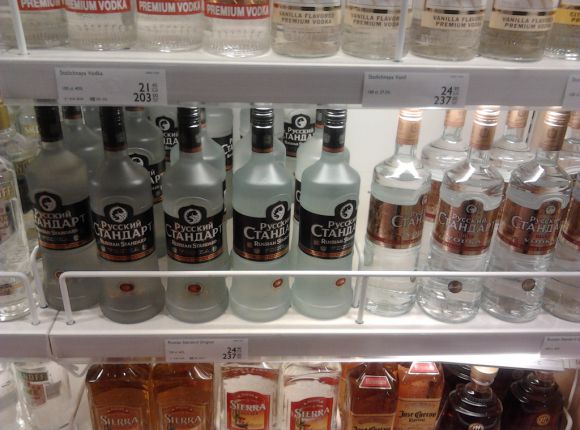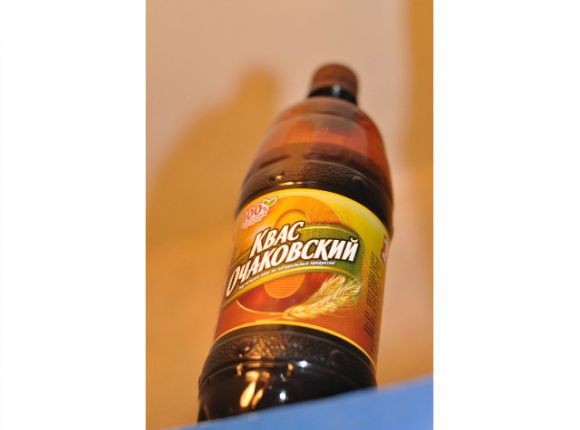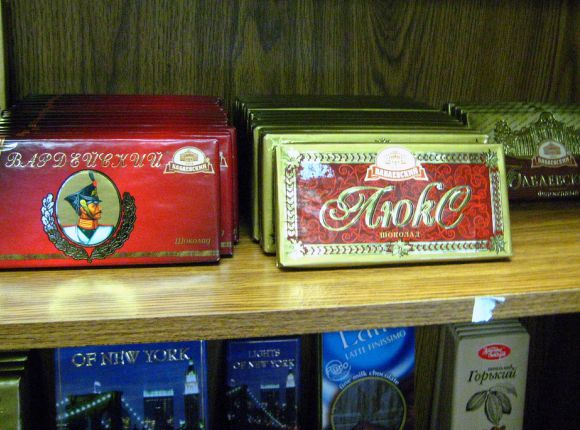1. Tretyakov Gallery Photo Album
Founded in 1856 by a wealthy patron of art, Pavel Tretyakov, The State Tretyakov Gallery is famous for its unique collection of Russian fine art – from medieval icons to futurism and constructivism. The quality of exhibited works make it comparable to the French Orsay and the Italian Uffizi. It goes without saying that everyone wants to keep a small part of this beauty for themselves.
Though you cannot buy an artwork from the gallery, you can nonetheless afford a large and beautiful book with great colorful photos and the detailed history of the best pieces exhibited in the museum. Printed on thick glossy paper, the album is nice to touch. The book is available both in Russian and English and provides a detailed description of the published works. The museum's collections are represented by separate chapters. This is an elegant gift to please any book and art lover! You may acquire the album in the gallery itself upon seeing the exhibition at about $140.
Where to find it:
The State Tretyakov Gallery
Address: 10, Lavrushinsky Pass
Opening hours: Tuesday, Wednesday, Sunday: 10 am - 5 pm;
Thursday: 10 am - 8 pm; Friday, Saturday: 10 am - 8 pm
"Dom Knigi"
Address: Kamergerskiy Pereulok, Moscow, Russia, 125009
Opening hours: Monday - Friday: 11 am - 9 pm;
Saturday, Sunday: 11 am - 8 pm
"Moskva"
Address: 8, Tverskaya street
Opening hours: Daily: 10 am - 10 pm
Buy It on Amazon:
Offline reading and travel directions:
With GPSmyCity App you can read this article offline on your mobile device, use the embedded offline city map and GPS navigation, as well as create a self-guided walk to visit the venues featured in the article.
2. Samovar

Though modern Russians don't always follow their old traditions, everybody still remembers "the hero" of the old Russian tea party - the famous samovar, a distant relative of today's electric kettle. Designed to keep the water hot for a long time and thus contributing to a long tea-talk, this curvaceous metal water boiler is considered a symbol of a family unity and comfortable home. Russian samovar appeared in the 18th century in the Ural region. Its "ancestor" had been known in Iran for many centuries before.
So what is the procedure of water-boiling in the samovar? Those who prefer modern comfort, with minimum cares, choose electric ones. Though they look different from the ordinary kettles, the principle of work is the same: you fill it with water, plug it into the socket and wait for the water to boil. The authentic samovars, however, used in the 18th-19th centuries, work on charcoal and have a small furnace inside. The water is poured into a cup or a teapot. You can choose between the two types at the numerous gift and antique shops in Arbat street. Those who do not like large and heavy souvenirs, can buy themselves a nice small samovar of about 5 liters.
Buy It on Amazon:
Offline reading and travel directions:
With GPSmyCity App you can read this article offline on your mobile device, use the embedded offline city map and GPS navigation, as well as create a self-guided walk to visit the venues featured in the article.
3. Artisan Jewelry: Finifty and Amber

Vintage-looking finifty jewelry is made of painted porcelain elements clad in the pieces of silver lace; one can imagine an Elven princess wearing such decorations. Rings and bracelets, hairpins and lockets, there are a lot of beautiful pieces to the most exquisite taste, and this is something you will surely not find in other countries. Real finifty is only produced in the city of Rostov; it is always handcrafted and hand-painted; the jewelry is usually decorated with floral motives, though sometimes the design may be different: for example, a locket or a brooch can have a small landscape on it.
Amber, romantically called “the tears of the Sun,” is mined on the Baltic coasts of Russia. Most often it resembles magically hardened sunlight or golden honey, but in reality its color varies from almost white to almost black with red flame in its depth. Amber is very loved by Russian artisans. It is used to make jewelry of all known kinds and styles, business souvenirs, chess sets and interior decorations.
Both amber and finifty can be acquired at many Arbat gift stores; besides, amber is sold at numerous jewelry shops throughout the city. The price of finifty and amber jewelry varies from $50 to $500.
Buy It on Amazon:
Offline reading and travel directions:
With GPSmyCity App you can read this article offline on your mobile device, use the embedded offline city map and GPS navigation, as well as create a self-guided walk to visit the venues featured in the article.
4. Palekh and Fedoskino Lacquer Boxes
Wonderful papier-mâché box covered with black lacquer and painted with special, seemingly glowing paints is a nice place to keep jewelry or love letters, if anyone still writes them at the age of the Internet. These boxes are handcrafted in the villages Palekh and Fedoskino in central Russia and decorated with intricate eye-catching miniatures one can contemplate for hours. There is an unusual spirit in these radiant pictures filled with symbolism but so live at the same time. This is the heritage of Russian icon painting allied with popular fantasy: the artisans usually take plots for the paintings from legends and fairy-tales, though sometimes the miniatures depict important historic events.
The price of a box depends on the picture's size; it usually starts from $200. Palekh and Fedoskino boxes are widely displayed on Arbat street; also, some exceptionally beautiful pieces can be found at the gift stores "Onegin" and "Skazka".
Where to find it:
Skazka
Address: 51, Arbat street
Opening hours: Daily: 9 am - 10 pm
Buy It on Amazon:
5. Caviar

Red caviar - salmon caviar, brought to Moscow from the Far East of Russia - has become the world’s symbol of prosperity. Tiny and shiny semi-transparent balls in different shades of red resemble precious stones: they look beautiful on canapés and taste just as good. Besides, caviar is a very nutritious product. It is considered wholesome to one's brain, bones and eyes and helps to reinforce immune system. Caviar contains nearly all known vitamins and proteins; it is the rare case when the proteins are 100% consumed by human organism. In the Far East, red caviar has always been the favorite food of hunters and fishermen; in some regions it even replaced bread. It was not until 1908 that they started selling it in Moscow and St. Petersburg thanks to the new technology of preservation. Since then, caviar has easily conquered Russian and foreign markets, and its price rapidly soared. Now caviar is a national delicacy. Its regular price is $10-15 for 100 grams.
High quality caviar is sold at Yeliseevsky food store - the oldest one in Moscow. It can also be found in large supermarkets and premium-class shops, such as "Azbuka vkusa".
Where to find it:
Yeliseevsky food store
Address: 14, Tverskaya street
Operation Hours: Monday-Sunday: 24h
Azbuka vkusa
Address: Strastnoy Bul'var, 6с1, Moscow, Russia, 125009
Open 24 hours
6. Zhostovo Trays

As well as a samovar, a Zhostovo hammered tray will make an outstanding decoration to any tea party, for it is not just a tray but firstly a piece of artwork. The trays are hammered at the Zhostovo Manufactory which has been successfully working since 1825. The most popular motive is live-looking, slightly radiant fruit and flowers on a pitch-black background. The legend says that in the early 19th century Zhostovo painters used to travel around the country making sketches of what they wanted to paint on their trays, hence a large collection of floral designs. Shiny apples, transparent grapes, enigmatic purple plums glow in the dark space of a tray with mysterious light: they resemble the fruit on the Italian Renaissance paintings. Sometimes, however, the trays depict beautiful Russian landscapes and romantic old churches. More seldom they carry portraits of people. Each tray created at the Zhostovo Decorative Art Manufactory is hand-painted and signed by the author. The price starts at $70.
Zhostovo trays are mainly sold at Gostiny Dvor. Other places are "Russian Souvenirs" and Russian Troika.
Where to find it:
Gostiny Dvor
Address: 4, Ilyinka street, entrance No 6
Opening hours: Monday-Sunday: 10 am - 10 pm
Russian Souvenirs
Address: 12, Arbat street
Opening hours: 9:30 am - 8:30 pm
Russian Troika
Address: 28, Zvenigorodskoye Shosse
Operation Hours: Monday - Friday: 9 am - 5:30 pm
Buy It on Amazon:
7. Honey

Russia is proud of its innumerable sorts of honey, for apiculture has always been popular here. For many centuries honey has been an important item of Russian export. It is not only a tasty dessert, but also a wonderful wholesome product which helps people cure many diseases. It is very nutritious and contains numerous vitamins and minerals. Various kinds of honey have their own healing qualities. In Russia, honey is used to heal flu, wounds and burns, heart and stomach diseases. It is also an excellent beauty product to keep the skin young and shiny.
Honey largely varies in thickness, fragrance and color; it may be white, yellow, red and nearly black, transparent and not. The most delicious sorts are chestnut, lime and raspberry honey, while considerably bitter dark buckwheat honey is the richest in vitamins. The usual price for honey is $0,5-1 per 100 grams.
Great honey bazaars, where honey is brought from all over the country, are organized annually in the most beautiful places of Moscow - memorial estates Kolomenskoye and Tsaritsyno.
Where to find it:
Dom Meda
Address: 5/10, Novokuznetskaya street
Operation Hours: Monday-Saturday: 9 am - 8 pm; Sunday: 10 am - 8 pm
8. Matryoshka (Russian nested doll)

The name "Matryoshka" comes from "Matryona" - an old-fashioned Russian female name. A legend has it that in the late 19th century Moscow artisans Vassiliy Zvezdochkin and Sergey Malyutin saw a Japanese toy "fukuruma" composed of several figurines hidden one inside the other. They made similar dolls representing Russian boys and girls (the last one was a baby) and richly decorated them with beautiful ornaments. The success was so great that in the 1900s matryoshkas were ordered not only from all over Russia, but also from Paris and Leipzig. It seems like a glimpse into childhood, opening the doll to discover there's one more, and then one more again and so on; the number of hidden dolls can vary from 10 to 50. The biggest matryoshka in history was made for an international expo in Tokyo and contained 70 figurines.
Russian gift shops offer exquisitely decorated nested dolls of nearly all sizes and imaginable designs - from traditional large-eyed beauties in colorful clothes to comic portraits of the famous Russian pop-stars and statesmen. Depending on price and design, they may serve as children's toys or luxury interior decorations. Innumerable matryoshkas densely populate Arbat and the adjacent streets. You can find a good selection at the "Russian Souvenirs".
Where to find it:
Russian Souvenirs
Address: Arbat St, 12, Moscow, Russia, 119002
Opening hours: Daily: 9:30 am - 8:30 pm
Buy It on Amazon:
9. Orenburg Shawls
Tender and as thin as cobweb, Orenburg shawls will remind you of the era of Tolstoy and Dostoevsky. These garments are highly appreciated throughout Russia for their romantic beauty, softness and warmth that helped Russian ladies, back in the old days, to survive severe winters in style. The quality hand-knitted Orenburg shawl also became the subject of a folk song much loved by the older generation. Any woman will be pleased to be wrapped in this fine piece of woolen lace, largely seen as a sign of love and affection. No doubt, this elegant and useful gift will be duly appreciated! The traditional color of Orenburg shawls is white or grey, however, nowadays they are also available in a wide range of colors. The shawls cost from $100 to $300.
10. Krasnaya Moskva Perfume

"Krasnaya Moskva" ("Red Moscow") is a Russian-made perfume with history. Along with the red flag and portrait of Gagarin, this is a symbol of the Soviet era, especially for ladies. Created in 1913 by Henri Brocard, an outstanding Moscow perfumer of French origin, it was known initially under the name "The Empresses' Bouquet" and was dedicated to Maria Fyodorovna (Danish princess Dagmar), mother of Nikolay II, the last emperor of Russia. Following the Bolshevik Revolution, the Brocard perfumery was renamed to "Novaya Zarya" ("The New Dawn"), and its chef-d-oeuvre also received a new name - Red Moscow. It is said to have been much loved by the Russian 1930s-40s movie star, Lyubov Orlova, and the first lady-cosmonaut Valentina Tereshkova. Even today, the design of Red Moscow bottle stays the same as it was at the outset of the Soviet era, much as its popularity with the Russian women - strong as ever. The perfume has a rich and long-lasting fragrance with the opening notes of neroli and bergamot, jasmine and rose, and the basic notes of ilang-ilang, followed by the trail composed of iris, vanilla and tonka beans.
This sensual and feminine perfume is sold at "Novaya Zarya" factory stores located in the heart of Moscow. Limited editions of "Krasnaya Moskva" clad in a more sophisticated souvenir packaging can be found at the label store.
Where to find it:
Novaya Zarya
Address: 3, Ulitsa Varvarka
Opening hours: Monday - Friday; Sunday: 10 am - 9 pm
Saturday: 10 am - 8 pm
Novaya Zarya
Address: 4/5, Nikolskaya Street
Opening hours: Daily: 9 am - 8 pm
Novaya Zarya
Address: 12, Arbat street
Opening hours: Daily: 10 am - 9 pm
11. Furs
"Soft gold" - this is how the Russians poetically refer to furs. No wonder since for many centuries furs were historically used as currency along with golden and silver coins and made up a premium export item. Hunt used to be one of the most important sources of income in this country, rich in dense forests, and when Siberia joined the Moscow kingdom in the 16th century, Russia received, along with the mines of ordinary gold, vast quantities of the soft one. For a long time, fur was not a luxury item, but a bare necessity to survive the severe Russian climate. Even today, to present your wife with a fur-coat of mink, sable or polar fox fur is considered a sign of deep spousal attachment and care, as wearing furs is the best way to feel comfortable and look sexy. It makes no sense trying to list all the kinds of fur produced in Russia - from lambskin to precious ermines. A full-length fur coat will cost from $2000 to $10,000 depending on fur and its quality.
Where to find it:
Russky Meh
Address: 9, Dokukina street
Opening hours: Monday-Saturday: 10 am - 7 pm
Buy It on Amazon:
12. Dymkovo Toys
Russian artisans have taken good care of the little ones! A brightly-colored toy featuring a cute animal, a fairy-tale bird or a legendary hero is a nice gift to any child. Made of natural clay and hand-painted, it is full of joy and life. The intricate ornaments of the figurines are, in fact, pagan symbols dating back to the pre-Christian past of Russia - sun and moon, nature's elements, luck and fertility. In the village of Dymkovo, where the toys are made, there is a number of dynasties of talented artisans - daughters, mothers and grannies. Dymkovo toys were initially made for the old mid-spring festival associated with the mother nature's awakening. Very simple, often humorous (a man riding a goat or a bear), they became popular all over Russia and far beyond, taking an outstanding place in numerous collections. The toys are sold at the gift stores in Arbat and the handcrafts shop of Izmailovo Kremlin. The prices start at $10.
Where to find it:
Izmailovo Kremlin
Address: 73, Izmailovo highway; just behind the "Izmailovo" hotel complex
Daily: 9 am - 9 pm
13. Valenki (felted boots)

No shoes will keep your feet so warm in severe winter cold as the famous "valenki", specially made of felted wool to be worn in thirty to forty degrees below zero, when ordinary boots fail to protect you. The first felted boots in history were supposed to be worn by the nomads of the Great Steppe more than a thousand years ago. The peak of their popularity in Russia fell on the 19th and the early 20th centuries. Moreover, valenki still make part of the winter uniform of the Russian army; back in the World War II, they helped Russian soldiers overcome bitter frost during the ferocious Stalingrad battle. For several decades after the war, valenki were generally considered old-fashioned country footwear and were worn in the city only in the coldest weather. Now the situation is strikingly different: felt boots are back in fashion and make a source of inspiration for footwear designers who provide the valenki with rubber soles to make them serve longer. Today's valenki are made in different colors and decorated with leather, crystals and embroidery. It is a unique gift for keen fashion-lovers you will find nowhere else.
If you visit the Museum of Valenki, you will find there not only old and modern designs, but also have a chance to participate in felting master-class and try to make felted boots yourself! Don't forget to visit the museum store! Other places where you can acquire valenki are Arbat and the gift stalls between Red and Theatre squares.
Where to find it:
Museum of Valenki
Address: 12, 2nd Kozhevnichesky pass
Operation Hours: Tuesday-Wednesday, Friday-Saturday: 11 am - 5 pm
Buy It on Amazon:
14. Vodka

The Russian vodka hardly needs any presentation, and is considered Russia's #1 drink all over the world. Back in the 15th century, however, the term "vodka" applied to any spirit made of wheat, herbs, honey, fruit or berries, and it wasn't until the 19th century that vodka acquired its modern composition and taste. Today, vodka is a traditional element in many cocktails and, what is more important, a quick remedy to warm oneself up from inside after spending a long time in the cold. It makes an exceptionally good company to caviar. There is a popular belief that one shot of vodka considerably increases mental activity - something one cannot say about drinking a whole bottle at a time.
Unlike Norway or Finland, vodka in Russia is sold at any food store any time. The most popular labels are “Russkiy Standart”, “Putinka”, “Gzhelka”, “Kalashnikov”, and “Zhuravli”. Some vodka brands are sold in exclusive souvenir bottles which will make, together with their content, a nice present to your friend, father or boss. As well as fur, vodka is not something to cut your costs on: the more expensive, the better. The price of high-quality vodka starts at $40 per liter. The best place to buy it is the previously mentioned Yeliseevsky shop.
Where to find it:
Yeliseevsky shop
Address: 14, Tverskaya street
Opening hours: Monday-Sunday: 24h
15. Kvass
Another very popular local drink, a soft one, is kvass - most often made of bread (at least the one sold in food stores; home-made kvass is sometimes prepared of rice, apples, berries or honey). Traditional Russian Kvass has a deep brown color and resembles stout beer by taste. Being slightly sour, it perfectly helps to quench thirst and as such is largely sold in Moscow’s streets in hot summer months. In any Moscow supermarket or food store you will find several brands of bottled kvass on offer. Buy some to not just treat your friends to the exotic Russian drink, but also to take good care of your own health. Kvass is largely known in Russia as a very wholesome drink, rich in vitamins and helping people prevent or resist various health problems. Kvass is usually sold in 2-liter plastic bottles at $5-8. As well as vodka, it can be found in any food store, and once you tried it, there's a strong chance that you will remain a fan of kvass forever!
16. Russian Chocolate
Russian chocolate is, perhaps, not so widely known in the world as Swiss and Belgian chocolate, but it is not at all worse. Rich in taste, with the strong fragrance of natural cocoa and milk, it has been highly appreciated for generations - from the Russian Empire to our days (the oldest existing chocolate factory was founded in 1867). The best Russian chocolate is firm and slightly bitter. The most loved local labels include “Alyonka”, “Vdohnovenie” (Inspiration), “Lux”, “Visit” "Skazki Pushkina" (Pushkin's Fairy-tales) and “Korkunov”. One can also find chocolate statuettes or gift sets showing the views of Moscow.
For premium-class Russian chocolate, visit the "Krasny Oktyabr" (Red October). A regular tablet of Russian chocolate costs $2-$5, a box of chocolate sweets - $5-$20.
Where to find it:
Krasny Oktyabr (Red October)
Address: 12, 1-Ya Tverskaya-Yamskaya Street
Opening hours: Daily: 9 am - 10 pm
Buy It on Amazon:
Other Interesting Souvenirs from Russia
If you are outside Russia and have no immediate plans to visit it soon, or you don't want to carry too much in your luggage on your way back home, these days you can find a wide selection of authentic and truly interesting Russian souvenirs online. Presented here are some of the top Russian products sought by foreign visitors, now available online for your convenience.
1. Khokhloma - Wooden tableware and figurines painted in a distinctive Russian “Khokhloma” style, featuring red, green and gold flower patterns on dark background, resulting in a somewhat metal-like appearance.


2. Gzhel - Enameled pottery and ceramics adorned in the distinctive blue designs on white background, the style originated in the Russian village of Gzhel (hence the name), near Moscow.

3. Soviet Memorabilia – collectible items (badges and other artifacts) dating back to and representative of the Soviet era.



5. Podstakannik - Tea glass holder much popular in pre-revolutionary and Soviet Russia, particularly for long train journeys. Mass produced during the Soviet era, today it represents a collectible item of the once traditional way of serving tea in Russia.

6. Malachite – Pieces of jewelry and other nice widgets made of malachite, deep green opaque gemstone found in Russia in rich supply and historically used for manufacturing fine items for the Russian royalty.

7. Zhostovo trays – Metal trays, masterly hand-painted in the Russian folk manner originated in the early 19th century in the village of Zhostovo, outside Moscow. The style is dominated by flower motifs and is said to be brought into Zhostovo from the Ural region.


9. Tolstoy and Dostoyevsky books – For those avid readers and lovers of Russian literature, these two authors are, perhaps, the most notable pillars of the Russian prose of all times.






10. Hair Barrettes – Russian-made, hand-painted hair slides (clips and barrettes) with a paper-mache base and metal clip on the back, covered on top with the “Zhostovo” style flower motifs painted in bright tempera and finished with layers of glossy lacquer. Good gift for women with long hair.




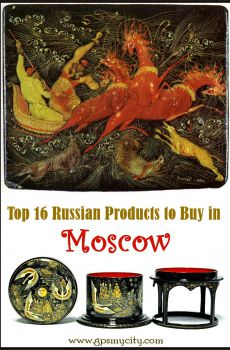
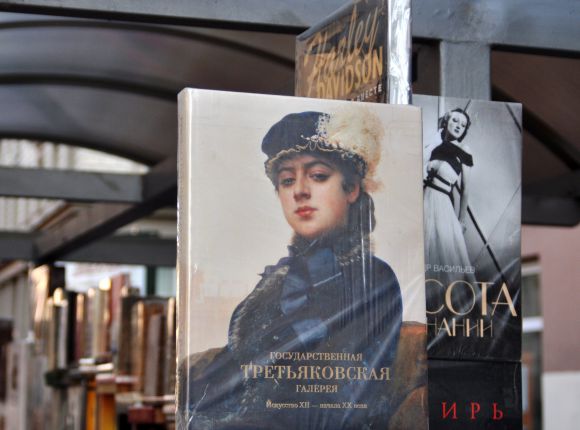
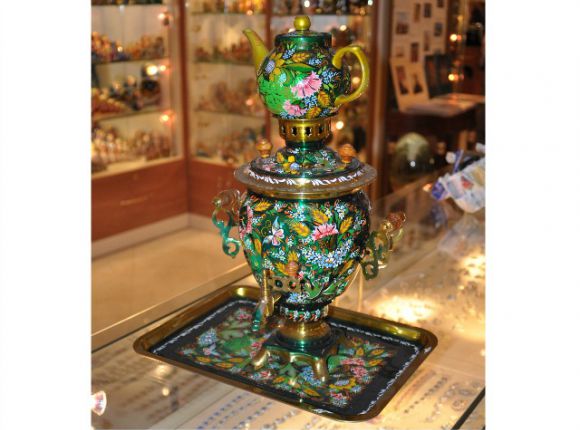
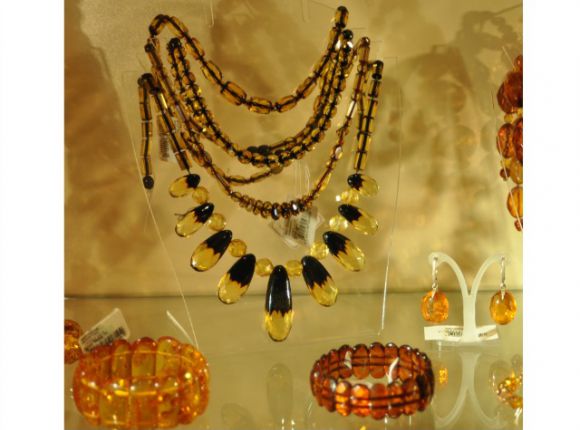
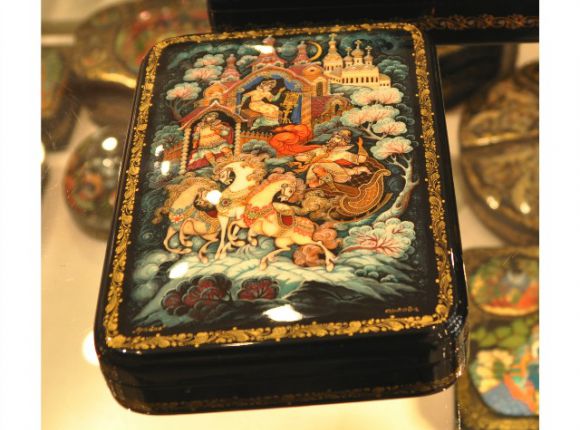


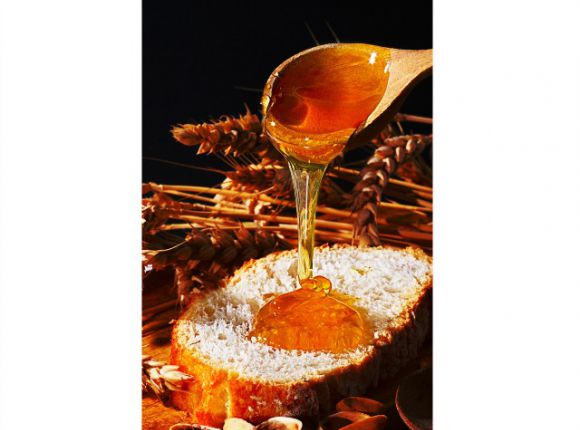
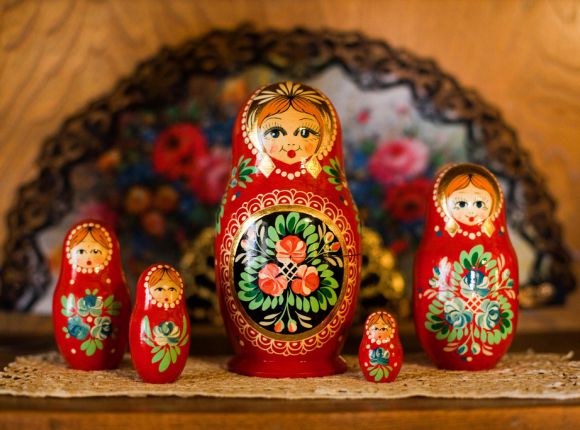.jpg)
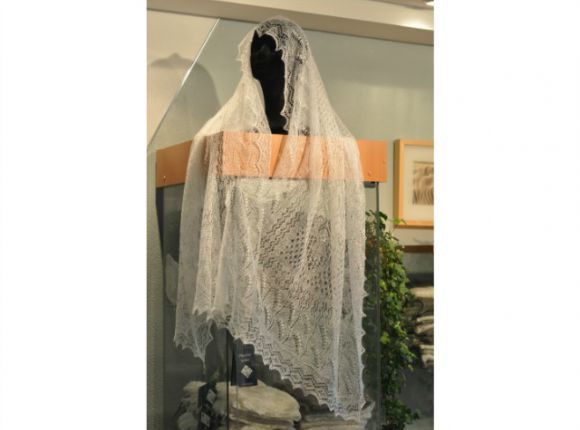
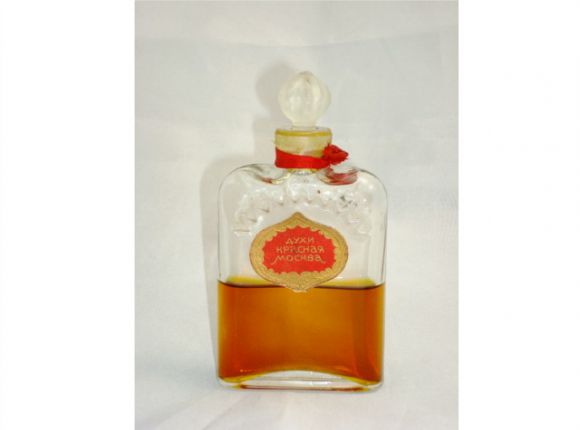
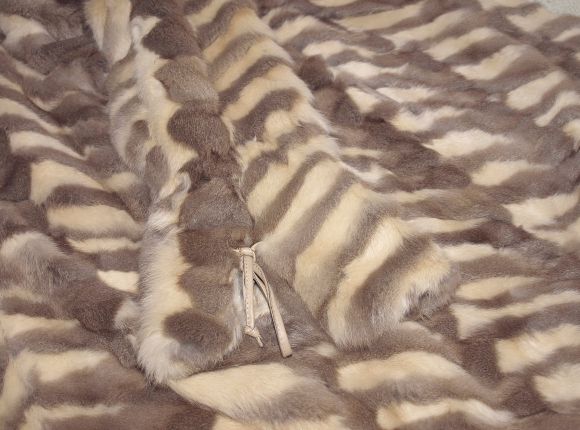
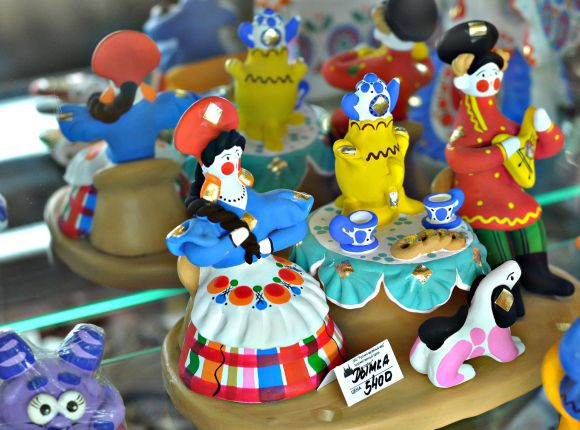
.jpg)
